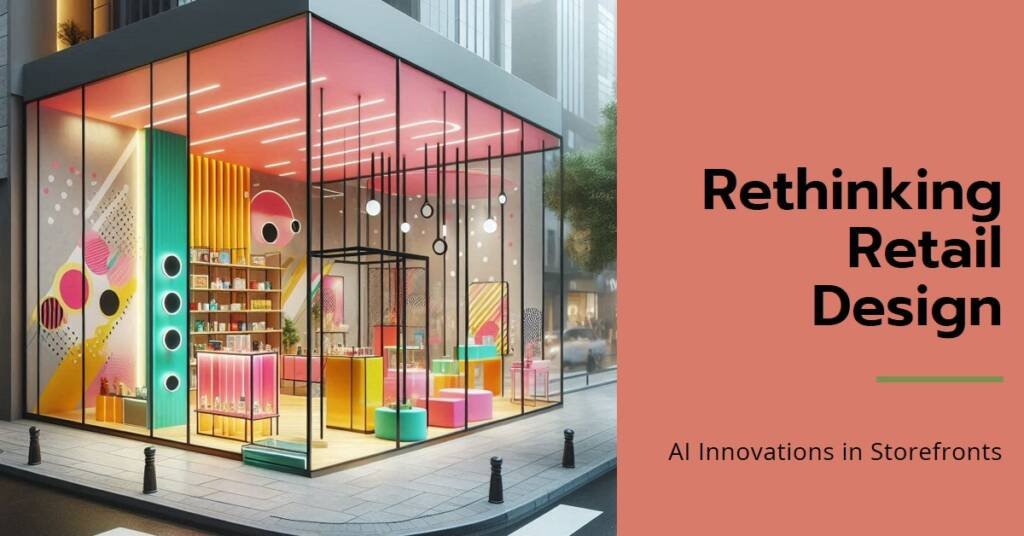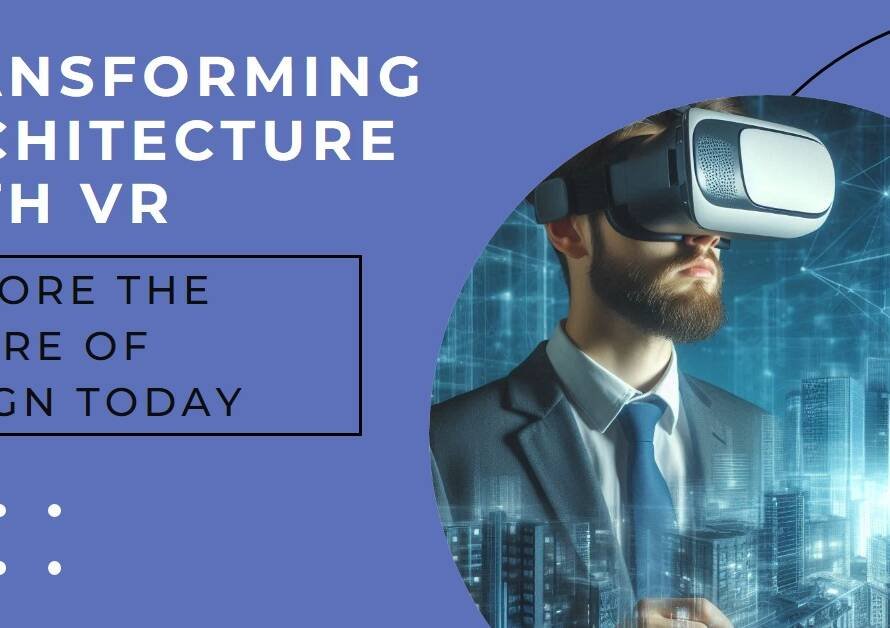
Table of Contents
- Introduction to the Evolution of Retail
- The Role of AI in Retail
- Innovative Storefront Designs: A New Concept
- The Impact of Omnichannel Strategies
- Consumer Behavior and Expectations in the AI Era
- Case Studies of Innovative Retailers
- Challenges and Considerations for Retailers
- Sustainability in Retail Design
- Future Trends: What Lies Ahead for Retail
Introduction to the Evolution of Retail
The retail industry has undergone significant transformation over the years, driven by technological advancements and shifting consumer expectations. Traditional storefront models, characterized by physical shops where transactions took place face-to-face, have faced challenges due to the rise of online commerce. The convenience of shopping from home, coupled with the vast selection available at consumers’ fingertips, has led to a decline in foot traffic at brick-and-mortar stores. This evolution highlights a fundamental shift in how consumers approach shopping, leading retailers to rethink their strategies.
Historically, retail spaces were designed primarily for display and transactions, providing a straightforward shopping experience. However, the advent of e-commerce has necessitated a re-evaluation of the role these physical locations play within the broader retail ecosystem. As online shopping continues to grow, retailers are compelled to adapt their business models to maintain relevance and attract customers. This includes integrating technology into the shopping experience and reimagining store design to create an engaging environment.
The changing landscape of consumer behavior also plays a critical role in this evolution. Today’s consumers prioritize convenience, personalized shopping experiences, and interactive engagement. They seek out stores that offer more than just products; they desire memorable experiences that resonate with their values and lifestyles. As a result, incorporating artificial intelligence (AI) and innovative design elements has become essential for retailers aiming to differentiate themselves in an increasingly competitive market.
This discussion will explore how AI and design are shaping the future of storefronts, focusing on their potential to enhance the physical shopping experience and draw customers back into stores. As the retail industry continues to evolve, understanding these dynamics will be crucial for businesses looking to thrive in the new era of retail.
The Role of AI in Retail
Artificial Intelligence (AI) is increasingly becoming a cornerstone of modern retail environments, transforming how businesses operate both behind the scenes and on the sales floor. One of the most significant applications of AI in retail is the creation of personalized shopping experiences. Retailers are leveraging machine learning algorithms to analyze customer data, enabling them to tailor product recommendations, promotions, and even the layout of their stores based on individual purchasing behaviors. For instance, companies like Amazon employ AI-driven systems that not only track user interactions but also predict future purchases based on previous shopping patterns.
In addition to enhancing customer experiences, AI plays a vital role in optimizing inventory management. Retailers can utilize AI to predict stock levels more accurately, reducing the likelihood of overstocking or stockouts. Solutions such as predictive analytics assess historical sales data, current market trends, and seasonal fluctuations to provide insights on what products to stock and in what quantities. Walmart, for example, has successfully integrated AI into its inventory management processes, which has resulted in reduced operational costs and improved efficiency across its supply chain.
Moreover, AI is revolutionizing customer service automation in retail environments. Chatbots and virtual assistants, powered by natural language processing, are employed to handle customer inquiries, offering support during off-hours and freeing up human staff for more complex tasks. Retail brands like Sephora and H&M have implemented AI-based chatbots that assist customers with product inquiries, availability, and even styling advice. These initiatives not only enhance customer satisfaction but also allow brands to engage customers continuously, thus fostering loyalty and encouraging repeat visits.
Overall, the integration of AI technologies is reshaping the retail landscape. As retailers continue to explore innovative ways to harness AI, the future storefronts promise to be more responsive, efficient, and customer-centric than ever before.
Innovative Storefront Designs: A New Concept
The landscape of retail is undergoing a dramatic transformation, driven by innovative storefront designs that aim to enhance customer engagement and foster emotional connections. Modern architectural trends are increasingly focused on creating spaces that resonate with shoppers on a deeper level. This shift is significant, as the visual appeal of a storefront is often the first point of interaction between a consumer and a brand, making it essential to curate an attractive and functional layout.
Contemporary storefront designs are characterized by clean lines, open spaces, and the use of sustainable materials. Retailers are now prioritizing layouts that encourage seamless movement, allowing customers to navigate the shopping environment intuitively. The incorporation of technology, such as augmented reality displays and interactive signage, further elevates the experience by making the storefront more dynamic and engaging. These elements not only attract passersby but also invite them to explore the offerings within, showcasing products in a visually appealing manner.
Another key trend in innovative storefront design is sensory engagement. Retailers are increasingly aware that the shopping experience extends beyond mere visuals. They are integrating multisensory elements—like scent marketing and ambient soundscapes—that captivate customers’ senses. For instance, a fragrance diffusing through the storefront can evoke positive emotions and create a memorable impression. Similarly, unique soundscapes can enhance the atmosphere, making the space more inviting and encouraging customers to linger longer. This holistic approach to design aims to forge stronger emotional connections between the brand and its target audience, resulting in a more loyal customer base.
Ultimately, the innovative designs of modern storefronts encapsulate a fusion of aesthetics and functionality. By embracing architectural advancements and sensory engagement strategies, retailers can create compelling environments that not only attract customers but also leave lasting impressions long after they’ve left the store.
The Impact of Omnichannel Strategies
In recent years, the retail landscape has undergone a significant transformation with the rise of omnichannel strategies, which seek to unify the customer experience across both physical and digital platforms. Omnichannel retailing is no longer just an innovation; it has become essential for brands striving to enhance customer engagement and increase brand loyalty. With customers expecting a seamless experience, businesses are increasingly utilizing artificial intelligence (AI) and design principles to create cohesive and integrated shopping journeys.
The primary aim of an omnichannel approach is to ensure that customers can engage with brands through various touchpoints, whether in-store, on a mobile app, or online. AI plays a crucial role in this integration by analyzing customer data and behavior across different channels. This allows retailers to personalize the shopping experience, providing tailored recommendations based on individual preferences and past purchases. AI-enhanced insights help businesses to predict trends and manage inventory more efficiently, ultimately leading to a smoother shopping experience.
Design also holds immense significance in the successful implementation of omnichannel strategies. Strategic design not only enhances the functionality of physical storefronts but also aligns them with digital platforms for a coherent brand message. For instance, the visual aesthetics, signage, and layouts in stores can be harmonized with online interfaces to foster recognition and trust among consumers. A well-thought-out design approach facilitates easy navigation, making it simpler for shoppers to move between in-store and online environments.
Ultimately, the synergistic relationship between AI and design in omnichannel retail serves to create memorable and engaging customer experiences. By blurring the lines between online and offline interactions, brands can enhance customer satisfaction and loyalty, driving long-term success in an increasingly competitive market. As the retail sector continues to evolve, adapting to these changes will be critical for retailers aiming to thrive in the future.
Consumer Behavior and Expectations in the AI Era
As artificial intelligence (AI) continues to advance, consumer behavior and expectations in retail are evolving significantly. Shoppers are increasingly looking for personalized experiences, which are becoming paramount in their purchasing decisions. This shift can be attributed to AI technologies that analyze vast amounts of data to provide individualized recommendations and insights tailored to each customer’s preferences. Retailers leveraging AI-driven analytics are able to enhance the shopping experience, leading to higher customer satisfaction and loyalty.
Moreover, convenience has taken center stage in the minds of consumers. As technology facilitates rapid access to information and services, shoppers expect seamless experiences across different channels, including online platforms and physical stores. AI tools such as chatbots for customer service or smart inventory management systems allow retailers to meet these convenience expectations, ensuring that shoppers receive immediate assistance and that popular products are readily available. The omnichannel approach, supported by AI, ensures streamlined interactions that align with consumer habits, ultimately fostering a more satisfying shopping journey.
Speed is another critical factor influencing consumer expectations. In today’s fast-paced environment, shoppers appreciate quick and efficient service, whether it comes to browsing products online or checking out in-store. AI technologies, such as automated checkout systems or predictive analytics for restocking, can dramatically reduce wait times and enhance the overall shopping experience. This emphasis on efficiency underscores the necessity for retail design to adapt accordingly, creating environments that allow for swift product access and checkout processes.
In essence, the integration of AI innovations in retail correlates directly with changing consumer behavior. Retailers that focus on personalization, convenience, and speed, while incorporating thoughtful design elements into their physical and digital storefronts, will be better positioned to meet the evolving expectations of today’s shoppers.
Case Studies of Innovative Retailers
As the retail landscape evolves, a number of pioneering brands are successfully integrating artificial intelligence (AI) and innovative design into their storefronts, thus setting benchmarks for others in the industry. These case studies highlight unique approaches and the tangible benefits they have reaped.
One prominent example is Sephora, a leader in the beauty industry that has effectively incorporated AI through its Virtual Artist feature. This technology allows customers to virtually try on makeup products using augmented reality. By enhancing the in-store experience, Sephora has not only driven foot traffic but also increased conversion rates as customers are more engaged and informed about their purchases. Alongside this, the store’s innovative layout promotes experiential retail, where the ambiance is designed to encourage exploration and interaction, creating a personalized shopping environment.
Another day-to-day illustration comes from the fashion retailer Zara. Utilizing AI-driven algorithms, Zara optimizes inventory management and identifies trending styles, allowing for rapid product turnover. The brand’s store design reflects this efficiency with an organized and minimalistic approach, enabling customers to navigate through collections swiftly. Moreover, Zara’s use of digital mirrors in select locations creates an interactive experience that harmonizes technology and design, encouraging customers to interactively engage with the merchandise.
Additionally, Amazon Go has made headlines with its cashier-less shopping experience, employing AI to automate the checkout process. Customers can enter the store, select items, and leave without traditional checkout lines, as their purchases are automatically tracked through advanced sensor technology. This seamless integration of AI with innovative design has not only decreased wait times but has also redefined consumer expectations of convenience within retail settings.
These case studies reflect a broader trend where retailers are leveraging AI and thoughtful design strategies to enhance customer experiences, streamline operations, and ultimately boost sales, highlighting a future where technology plays a pivotal role in retail success.
Challenges and Considerations for Retailers
As retailers navigate the evolving landscape of incorporating artificial intelligence (AI) and innovative design into their storefronts, they encounter a set of unique challenges that can impact their operational effectiveness. One primary concern is the cost associated with implementing state-of-the-art technology. Integrating AI systems, which may include customer analytics, inventory management, and personalized marketing tools, often requires substantial financial investment. These costs can deter smaller retailers, who may not possess the necessary capital to invest in advanced solutions while maintaining daily operations.
Moreover, the introduction of these technologies necessitates a significant emphasis on staff training. Employees need to be equipped with the skills to utilize new systems effectively. Training programs can demand additional time and resources, leading to potential disruptions in the day-to-day workflow. Retailers must carefully assess the balance between investing in technology and ensuring their staff is adequately prepared to leverage these innovations. This implies a need for ongoing professional development to ensure that team members are not only proficient with new tools but also prepared to adapt to continuous technological changes.
Another consideration for retailers is finding the right balance between automation and human interaction. While AI can streamline operations and enhance customer experiences through personalized services and efficient processes, excessive automation may alienate customers who value personal connections. Retail environments must create a harmonious blend of technology and human engagement to foster loyalty and satisfaction. Retailers should thus focus on designing a seamless shopping experience where AI supports staff rather than replacing them entirely. Addressing these challenges proactively can enable retailers to navigate the complexities of implementing AI and design in their storefronts while retaining their competitive edge in the market.
Sustainability in Retail Design
In recent years, the significance of sustainability in retail design has gained paramount importance, as consumers increasingly seek environmentally responsible practices. Retailers are now faced with the dual challenge of meeting customer demands and addressing environmental concerns. Integrating sustainable practices into storefront design not only appeals to eco-conscious consumers but also reflects a commitment to corporate social responsibility.
AI plays a pivotal role in optimizing resource usage within retail spaces. By leveraging data analytics and machine learning, retailers can better manage energy consumption, lighting, and heating systems to reduce their carbon footprints. For instance, AI-driven systems can automatically adjust lighting based on the time of day and foot traffic patterns, ensuring that energy is used efficiently without sacrificing the customer experience. Additionally, inventory management can be enhanced with AI, minimizing overproduction and waste by accurately predicting demand.
Beyond optimizing existing resources, sustainable retail design encourages the selection of eco-friendly materials. Storing products in sustainable packaging, utilizing reclaimed wood, or opting for recycled metals contributes to the overall environmental impact of a retail space. Furthermore, design strategies such as green roofs or living walls can enhance the aesthetic appeal of storefronts while improving air quality and promoting biodiversity within urban settings.
Moreover, incorporating circular design principles is increasingly recognized within the industry. This approach emphasizes not only reducing waste but also creating a design that allows products to be returned and reused. Retailers are now encouraged to develop systems that simplify product take-back initiatives, making it easier for consumers to make sustainable choices while supporting a circular economy.
Thus, sustainability in retail design—enhanced by AI technologies and eco-friendly practices—has the potential to drive a positive consumer experience while addressing critical environmental challenges. This alignment of design innovation with sustainable principles is essential for retailers aiming to thrive in the modern marketplace.


Future Trends: What Lies Ahead for Retail
The retail landscape is undergoing a significant transformation, driven by advancements in artificial intelligence (AI) and innovative design principles. As we look to the future, the integration of these elements is expected to shape not only consumer experiences but also the physical form of retail spaces. The continual evolution of AI technologies, such as machine learning and data analytics, will enhance the personalization of shopping experiences. Retailers will increasingly rely on AI to analyze consumer behavior, allowing for tailored product recommendations and promotions that align with individual preferences.
Moreover, the expectation of consumers is shifting towards more engaging and immersive shopping environments. Future storefronts are likely to incorporate advanced design elements that leverage virtual and augmented reality, enabling customers to visualize products in real-world settings before making a purchase. These technologies can create a seamless blend between online and offline shopping experiences, offering customers greater convenience and interactivity. The design of retail spaces could evolve to include flexible layouts that adapt to seasonal trends or promotional events, enhancing the overall agility of retail operations.
Additionally, sustainability will play a crucial role in future designs. Retailers are increasingly tasked with creating spaces that are not only visually appealing but also environmentally conscious. Utilization of sustainable materials, energy-efficient technologies, and smart design principles will become paramount, particularly as consumers grow more aware of the ecological impacts of their purchases.
As we anticipate these trends, it is clear that the collaboration between AI and thoughtful design will continue to redefine the retail experience. The potential for enhanced consumer engagement, coupled with a focus on sustainability, will guide retailers towards innovative strategies that meet the needs of tomorrow’s shoppers. Such developments underscore the importance of remaining agile and open to change within the ever-evolving retail sector.



